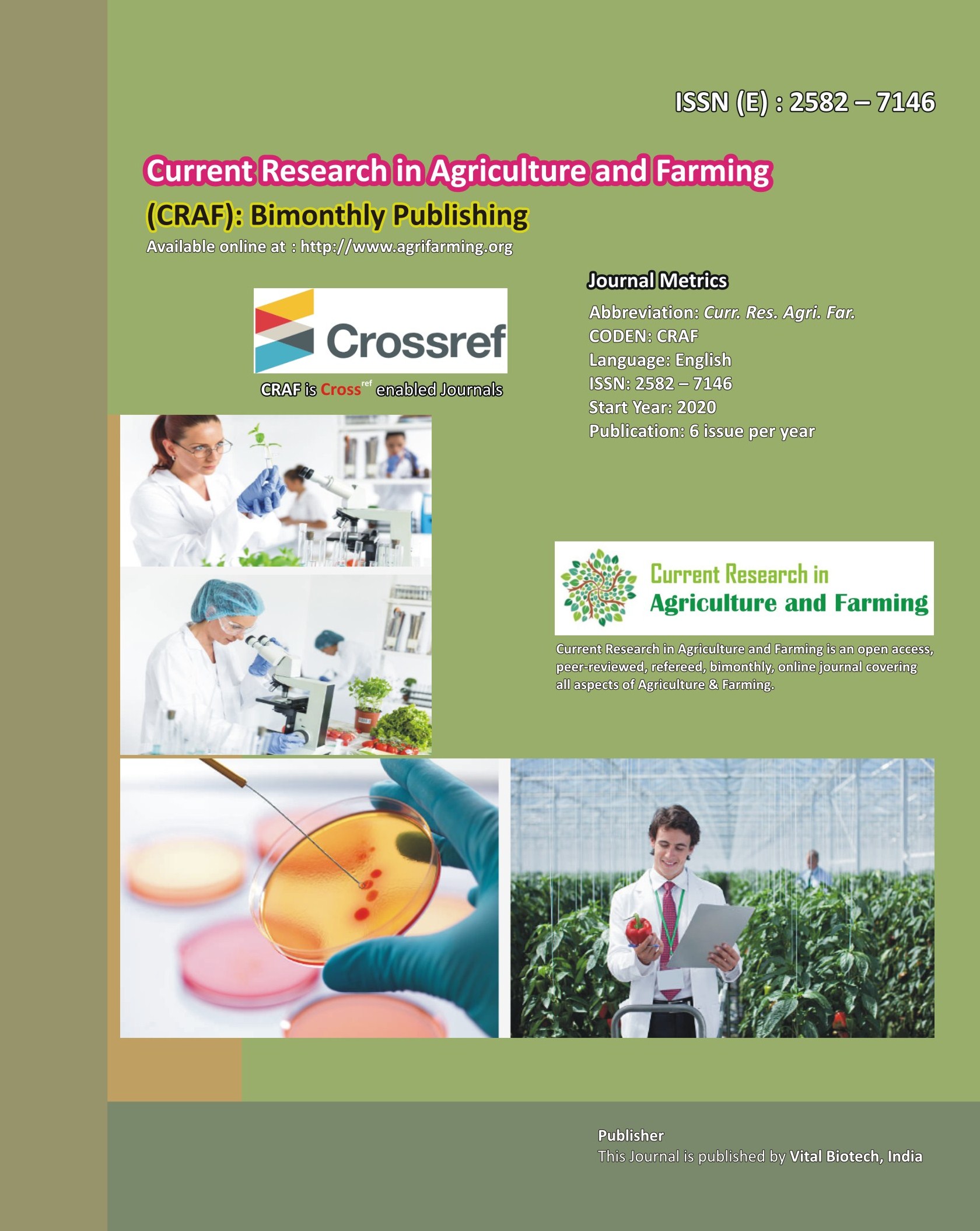

Current Research in Agriculture and Farming (CRAF)
Year : 2020, Volume : 1, Issue : 2
First page : (1) Last page : (8)
Article doi: : http://dx.doi.org/10.18782/2582-7146.101
Krishnendra Singh Nama1* and Kiran Choudhary2
1Research Supervisor, Dept. of Life Science, Career Point University, Kota (Rajasthan)
2Assistant Prof., Dept. of Botany, Lzebra College, Kota (Rajasthan)
*Corresponding Author E-mail: namasahib@gmail.com
Received: 9.02.2020 | Revised: 15.03.2020 | Accepted: 24.03.2020
ABSTRACT
Present study was conducted in Borabas village which is in close proximity to the Mukandara Hills Tiger Reserve (MHTR) of Kota, Rajasthan. This study was conducted for the assessment of impact of dairy cattle farming on socio-economic status of households specifically to evaluate the effect of cattle farming on household income and impact assessment of cattle on forest. A survey was conducted with a structural questionnaire to interview the 383 households. The study showed that the minimum and maximum household size of the households keeping dairy cattle was 52.65% and 0.88% respectively. On the other hand, minimum and maximum household size for not keeping dairy cattle was 56.05% and 3.82% respectively. Out of the total, 65.01% belongs to Gurjar community which is dominant on others and mainly involved in dairy farming. Bheel community is on second position with 24.54% and they are not involved in dairy farming. 48.67% of the household persons among households keeping dairy cattle has primary school education level, about 34.95% had secondary school education and 3.09% had higher education but 13.27% were illiterate. On the other hand, household’s not keeping dairy cattle, 50.95% had attended primary school, 30.57% had secondary education, 3.18% had higher education and 15.28% had no formal education. Only 0.78% of the households were engaged in farming, maximum 48.82% were involved in animal husbandry, 1.04% was both in agriculture plus animal husbandry, 9.13% were in animal husbandry plus wages while 33.42% were wage employees and rest 6.77% were involved in other activities like shop etc. Net annual income of Borabas from dairy farming is 16,55,17,250 Rs. Annual income of 226 household keeping dairy cattle is 7,32,377 Rs., after exclusion of expenditure on these cattle. It is concluded from the present study that households keeping dairy cattle have more income than the households not keeping dairy cattle. But dairy farming has negative impact on the biodiversity of MHTR.
Keywords: Animal Husbandry; Livelihood generation; Life Status; Tiger Reserve; Human-Wildlife Conflict.
Cite this article: Nama, K.S., & Choudhary, K. (2020). Impact Assessment of Cattle Farming on Forest and Socio-Economic Status, Village Borabas, Mhtr, Kota (Rajasthan), Curr. Rese. Agri. Far. 1(1), 1-8. doi: http://dx.doi.org/10.18782/2582-7146.101

